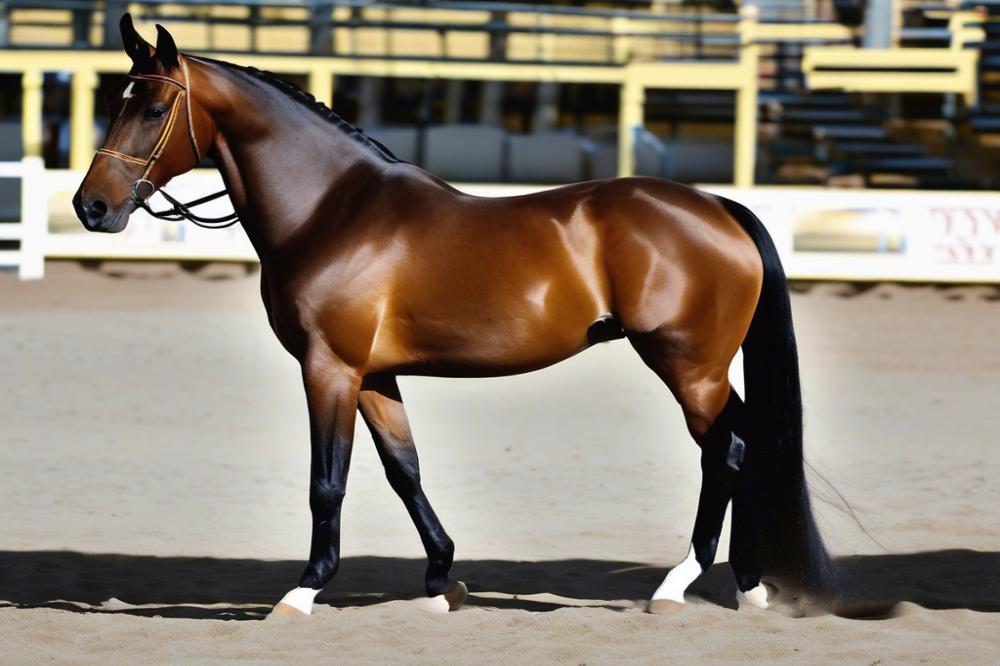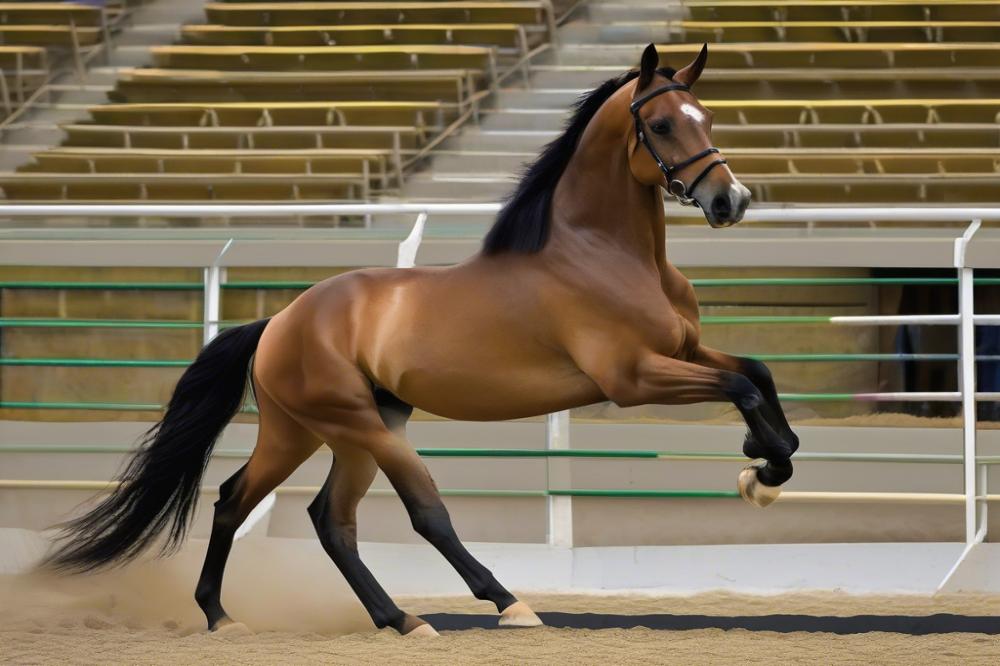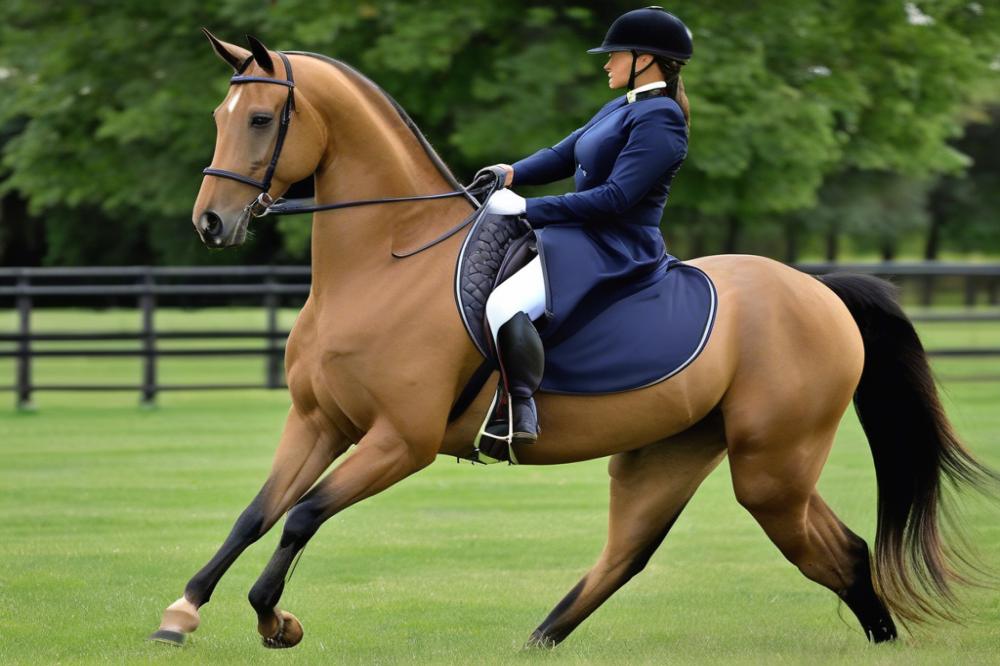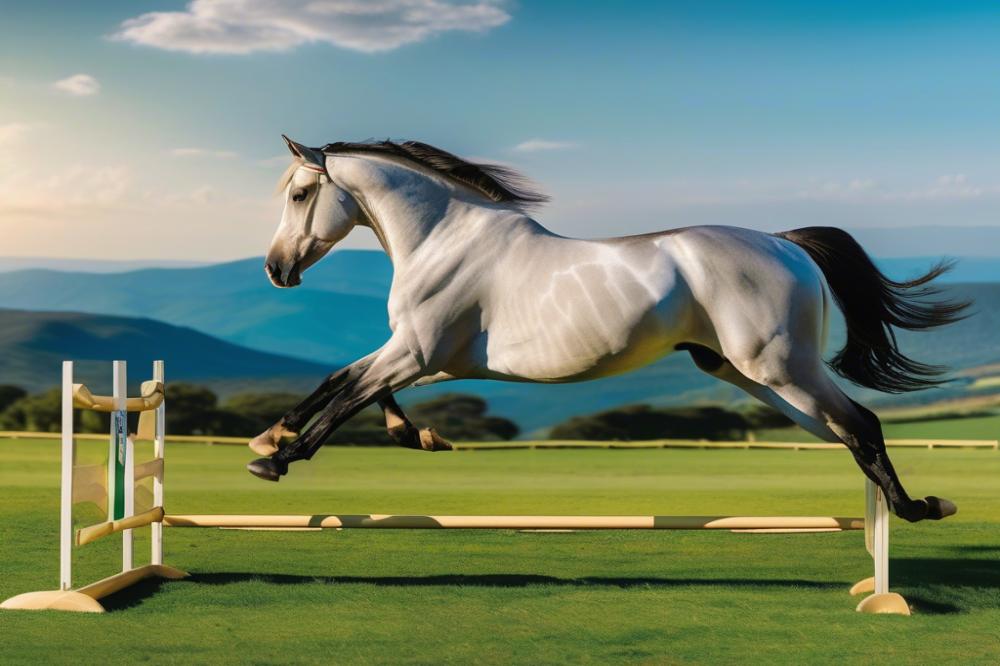Introduction
The Akhal-Teke horse is a stunning breed known for its striking beauty and remarkable endurance. Originating from Turkmenistan, these horses possess a rich history that contributes to their reputation. Their athleticism and elegant appearance make them popular among equestrians seeking both companionship and performance. The shimmering coat of the Akhal-Teke, often golden or metallic in color, stands out in any setting. This breed excels not only in speed but also in agility, making them suitable for various riding disciplines.
Preparing an Akhal-Teke for advanced training rides is crucial for success. Proper groundwork builds a solid foundation, ensuring that the horse is ready for more complex tasks. Ignoring preparation can lead to challenges later. By addressing their unique needs, riders can foster a lasting partnership built on trust. Understanding these fundamentals will enhance both the rider’s and horse’s performance.
This article aims to guide you through crucial steps for preparing your Akhal-Teke for more challenging riding experiences. We will explore the importance of tailored conditioning, the incorporation of advanced riding techniques, and how to establish effective communication with your horse. As you delve deeper into the world of Akhal-Teke training, you will discover strategies to develop your horse’s skills while also nurturing your bond. The journey ahead promises to be rewarding for both you and your horse.
Akhal-Teke training

The Akhal-Teke is a breed known for its striking appearance and strong work ethic. Understanding this horse’s characteristics is crucial for training. They are intelligent, sensitive, and have a high energy level. Recognizing these traits helps in developing trust and communication between horse and rider. Patience plays a vital role when working with them.
Understanding the Characteristics of Akhal-Tekes
These horses are renowned for their endurance and agility. Their history includes being used for racing and long-distance travel. This background makes them capable but also requires an understanding of their specific needs. Adaptability is key, as each Akhal-Teke may respond differently to training techniques. Building a bond through gentle interactions sets the foundation for effective learning.
Importance of Groundwork in Training
Groundwork is essential in preparing an Akhal-Teke for advanced training rides. Taking the time to establish basic skills helps create a respectful partnership. Exercises like lunging and leading can improve focus and responsiveness. When groundwork is prioritized, it builds the horse’s confidence and understanding. Safety becomes easier to manage as both horse and rider learn essential commands.
Introduction to horse care for Effective Training
Proper horse care is vital for any training program. A well-fed, healthy horse is more receptive to learning. Regular grooming contributes to both physical and mental well-being. Always check for injuries or signs of discomfort before starting a training session. Hydration and balanced nutrition affect performance, so it’s important to meet these needs consistently.
Training Methods Suited for Akhal-Tekes
Various training methods can be effective for these horses, but positive reinforcement works particularly well. Rewarding desired behaviors strengthens the horse’s willingness to learn. Alongside this, incorporating variety in exercises keeps the training engaging. Adjustments in pacing and difficulty can help maintain the horse’s interest. Focused and calm sessions often yield the best results when working with Akhal-Tekes.
Establishing Equine Fitness

Role of Conditioning Exercises
Conditioning exercises play a vital part in developing an Akhal-Teke’s fitness. These workouts help the horse prepare for more demanding tasks ahead. Activities can include long, slow rides to build a solid foundation. Alternating between short sprints and longer, steady trotting improves cardiovascular health. Consistent practice helps increase muscle tone and improves overall endurance. This gradual increase in workload is essential. It allows horses to adapt to higher levels of performance.
Importance of Agility Training for Performance
Agility training is crucial for enhancing performance in any riding discipline. The Akhal-Teke is known for its speed and grace. Incorporating maneuvers like sharp turns and quick stops enhances their natural abilities. Using poles or cones during training sessions can sharpen their skills. Exercises that focus on lateral movement can also enhance responsiveness. Horses that are agile can navigate obstacles with ease. Training sessions should include both agility drills and rest periods. This balance helps maintain focus and reduces the risk of fatigue.
Strategies for Developing Stamina and Strength
Developing stamina and strength requires a careful approach. Gradually increasing the intensity of workouts is a smart strategy. Include hill work to build muscle efficiently. If possible, vary the terrain to keep the horse engaged. Interval training can also be beneficial. Switching between high-energy bursts and slower recovery phases will enhance stamina. Consistent groundwork strengthens the bond between horse and rider. Sessions can include lunging and long-lining for focused training. Shaping strength and endurance is a key part of preparing for advanced training rides. Keeping records of progress can help track improvements over time. Listening to your horse’s needs is vital during this process. They respond best to positive reinforcement and gentle guidance.
Nutrition for Horses

Essential Nutritional Needs for Akhal-Tekes
Akhal-Tekes require a balanced diet to thrive. Their unique metabolism means they need quality forage. Hay and grass should be their primary food sources. Concentrates can support their energy needs. Include grains like oats or barley but in moderation. Vitamins and minerals play an important role in their diet. Supplements can help fill any nutritional gaps. Consult with a veterinarian for specific recommendations. Each Akhal-Teke may have individual requirements based on age, workload, and health.
Role of Diet in Supporting Advanced Training
A proper diet helps horses perform better. Energy levels and stamina depend greatly on their nutrition. Feeding before training can influence performance. Focus on providing easily digestible foods. High-quality protein supports muscle development. This is crucial for advanced training sessions. Staying hydrated is equally important. Fresh water should be available at all times. Monitor their weight to check if adjustments are needed. An ideal diet promotes not only performance but overall well-being too.
Tips for Managing Nutritional Intake
Regular feeding times create a routine for Akhal-Tekes. Divide daily feed into smaller meals. This can help with digestion and energy release. Always measure the amount of feed. Overfeeding can lead to health issues. Keep track of any changes in their appetite. Fresh, clean water aids in nutrient absorption. Changing the diet should be done gradually. Observe how their energy levels respond to dietary changes. Discuss any concerns with a specialized horse nutritionist.
Desensitization Techniques
Significance of desensitization for advanced rides
Preparing an Akhal-Teke for demanding training rides calls for a strong foundation. Desensitization plays a vital role in this process. Horses often face new objects, noises, and situations during rides. A horse that is desensitized reacts calm in unexpected circumstances. This can prevent accidents and build the rider’s confidence. Moreover, it enhances the horse’s ability to focus on tasks, increasing overall performance. Understanding the importance of this technique is crucial in ensuring a smooth training experience.
Methods to desensitize the Akhal-Teke
Starting with groundwork helps establish trust. Gradually introduce the horse to various stimuli. Begin with simple items, like tarps or plastic bags. Hold them at a distance and let the horse inspect. Gradually move closer until your horse is comfortable. Another effective technique involves using a flag or a whip. Wave these gently around the horse, letting it get used to the movement. Over time, increase the speed and height of the flags. Always progress slowly to avoid overwhelming the horse. Sound desensitization may also be helpful. Create noise using rattling items or a soft whistle. Start quiet and increase the volume gradually. This process helps build their tolerance for unexpected sounds.
Incorporating positive reinforcement in desensitization
Positive reinforcement is a key element during desensitization. Each time the Akhal-Teke responds calmly, reward it with a treat or praise. This creates a positive association with the stimulus. It turns a challenging encounter into a rewarding experience. Be consistent with your rewards to reinforce good behavior. Timing is important; reward immediately after the desired behavior. This helps the horse connect the action with the reward. Keep training sessions short and engaging. Boredom can hinder progress. Maintaining enthusiasm benefits both horse and trainer, leading to effective desensitization.
Rider Communication
Clear communication is vital for the bond between horse and rider. It helps both understand each other’s movements and intentions. Without this clarity, misinterpretations can lead to confusion and frustration. Strong communication fosters a partnership built on trust.
Building trust takes time and patience. Start with groundwork exercises to familiarize the Akhal-Teke with your presence. Spend time just being near the horse. Practicing gentle handling helps the horse regard you as a friend. Use calm tones and soothing gestures. Horses respond well to human emotions, so exhibiting confidence can improve their comfort.
Responsiveness comes with consistency. Riders should practice and reinforce cues regularly. Using the same signals for the same actions promotes reliability. Variations in signals can confuse the horse. For example, one soft squeeze of the leg can mean “go,” while a different cue can mean “slow down.”
Effective riding aids are essential for clear communication. Hands, legs, and voice should work harmoniously. Keep your legs relaxed but firm against the horse’s side. Instruct the horse to turn with shoulder shifts and subtle reins movements. Make sure not to pull too hard on the reins, as it can alarm or upset the horse. A gentle touch often speaks volumes.
Similarly, vocal cues can be powerful tools. Use consistent sounds for commands, keeping your tone friendly and encouraging. A simple “whoa” for stopping or a cheerful “good boy” can motivate the horse during challenging exercises. Consistency in vocal commands reinforces the understanding between horse and rider.
Lastly, visual cues also play a significant role. Horses are keen observers and can learn from your body language. Leaning slightly forward can help signal movement, while sitting back can indicate slowing down. Mimicking the motions can help reinforce your messages.
Wrapping Up: Key Insights and Final Thoughts
Preparing an Akhal-Teke for advanced training rides requires a solid plan and dedication. The first step involves getting to know your horse well. Understanding their personality can enhance the training experience. Focus on building trust through consistent interaction and bonding. This lays the groundwork for effective communication during rides.
Nutrition plays a critical role in performance. Providing a balanced diet that meets the needs of an Akhal-Teke is essential. Regular exercise should also be part of the routine. Both elements contribute to strength and stamina, making the horse ready for more demanding sessions.
Horse care is not just about keeping them healthy; it’s also about creating a supportive environment. Check the tack and riding gear to ensure everything fits properly. Pay attention to where the horse is uncomfortable. This will help you avoid unnecessary stress during training.
Training techniques should be diverse. Using a mix of exercises can keep the Akhal-Teke engaged. Experimenting with different training methods can help you discover what works best for your horse. Be mindful of their reactions and adjust your approach as needed.
Advanced preparation also means planning for different terrains and conditions. Familiarize your horse with various environments. Doing this will lead to a more confident and versatile ride. Set realistic goals to track progress and celebrate small victories throughout the journey.
Embrace the learning process. Each horse is different, and evolving your techniques is necessary. As you progress, you will encounter new challenges. Use these experiences to grow as a rider and partner. Maintain an open mind, and stay adaptable. This will certainly lead to a more rewarding training experience.



